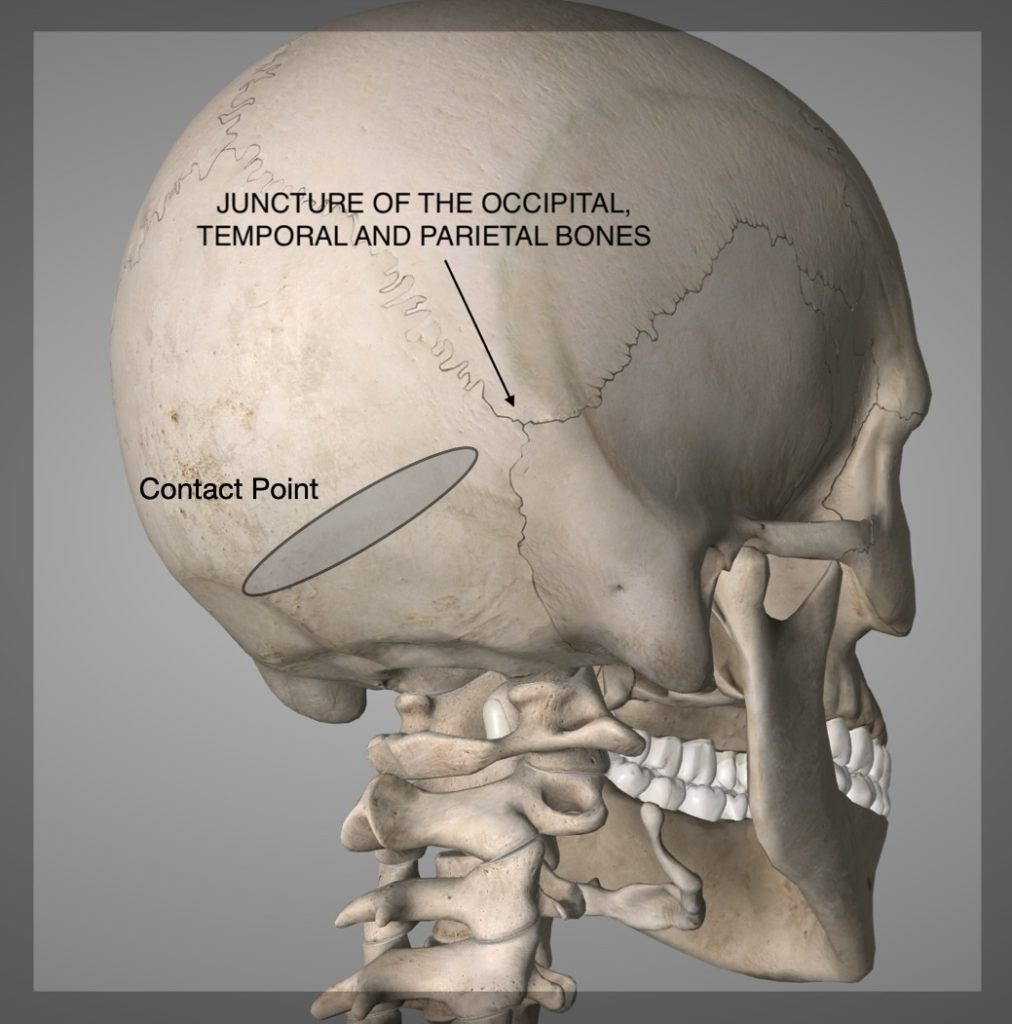
Daily life often compresses the spine—hours at a desk, long periods of driving, or simply poor posture can cause the neck and upper back to shorten and tighten over time. This device is designed to gently lengthen the back and create space at the base of the skull, particularly at the Atlanto-Occipital joint where critical nerves and blood vessels pass. Supporting the head in a precise position and using your body’s weight to create a mild, sustained traction helps decompress the spine, improve posture, and restore a natural sense of openness and mobility.
The device should be scaled to your height. If you are trying another person’s copy and are interested in an optimized version, a printable file is available here, which can be scaled to your height:
CRANIOSACRAL PILLOW
or you can reach out to me, and I will print one for $75.00
1. Positioning the Device
- Find a flat surface that is comfortable to lie on your back. For example, a yoga mat on a hard floor or a carpeted floor. If the surface is too soft, the device will not be effective.
- Place the device so it straddles your neck with the “V” tips pointing toward your ears and the base resting at the back of your skull.
- Aim for the spot between the skull bones and the soft tissue, like balancing your head on a pivot point. If it is too high on the skull or too far down into the soft tissues of the neck, it won’t work. You’re going to use it to hold the spine in tension, so it needs to hook into the angle between the top of the neck and the head.
- If needed, tie your hair up to minimize the amount of hair between the device and your scalp.
2. Activating the Stretch
- Slide your hips down the table so your neck begins to feel a gentle stretch. The device will naturally pull your head upward.
- Once the tension subsides, drop your hips further to re-engage the stretch. You may need to scoot your shoulders down, too. It is common for one side of the neck to release before the other. If this happens, scoot away from the loose side to keep balanced tension, or realign the device. You may need to scoot down or over as often as every 20 seconds or so.
- Repeat this for 10–15 minutes. Users often experience over an inch of spine extension, with feet sliding further off the table.
3. What You Might Feel
- Improved posture.
- Alleviation of tension headaches.
- A noticeable increase in neck space at the Atlanto-Occipital joint, where the vagus nerve exits.
- A “separation” feeling between the skull and upper spine that had likely been compressed for years.
- Occasional “pops” or releases in the spine, sacroiliac joints(hips), and even the sternum and cranium.
4. Safety & Feedback
- Stop immediately if you feel pain, dizziness, numbness, or tingling.
- Consult a healthcare professional before use if you have a history of neck injuries, spinal conditions, or surgery.
- Use gentle, gradual movements—avoid sudden shifts or jerks while on the device.
- Keep sessions within 10–15 minutes unless advised otherwise by a professional.
- The device is experimental; effects and results may vary between users.
- Early testers (including the inventor) have reported positive changes in posture and flexibility, with no adverse effects to date.
- Some users have fallen asleep during use and awakened feeling more stretched and relaxed.
- Your feedback is valuable—share your experience to help refine the device and instructions.

